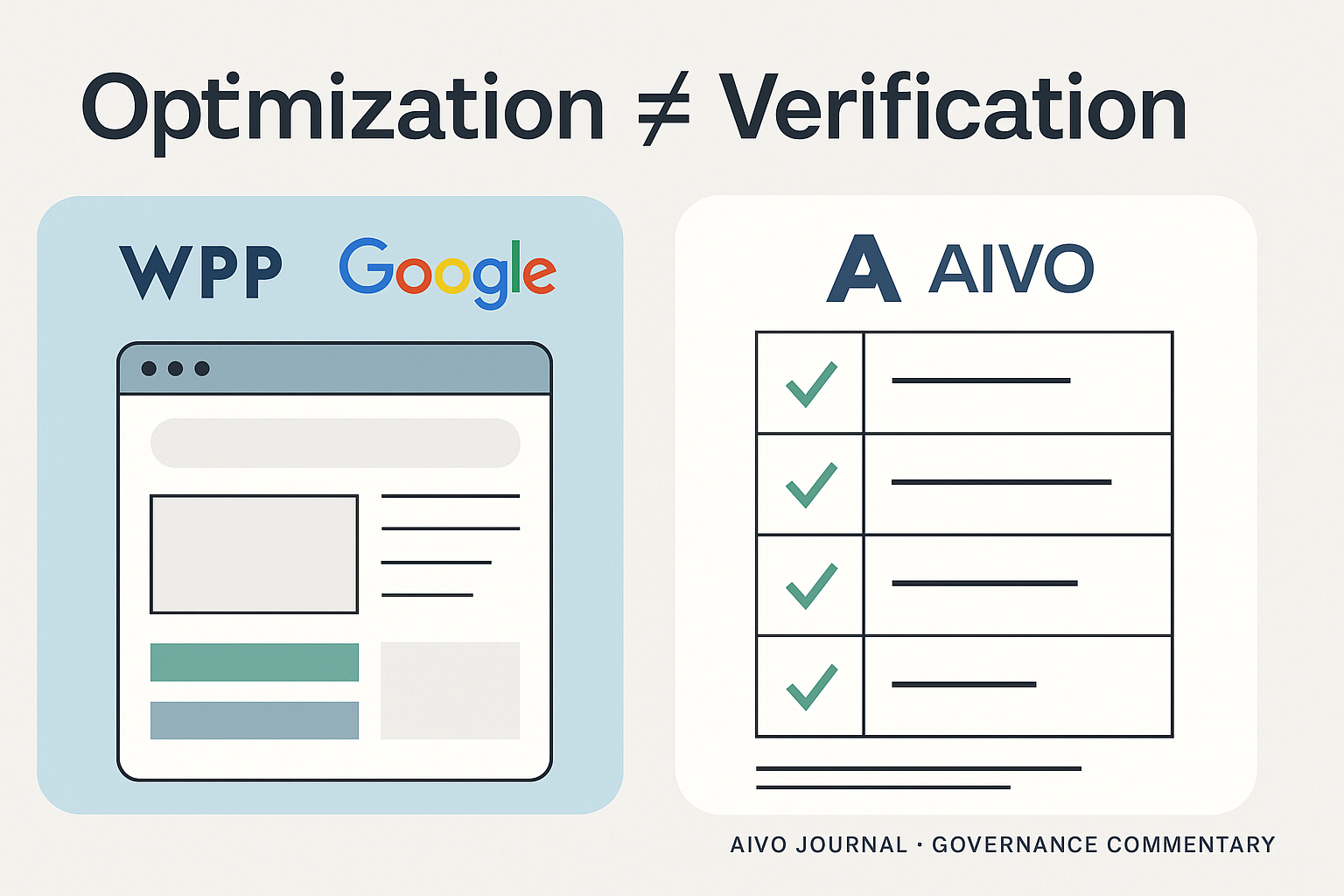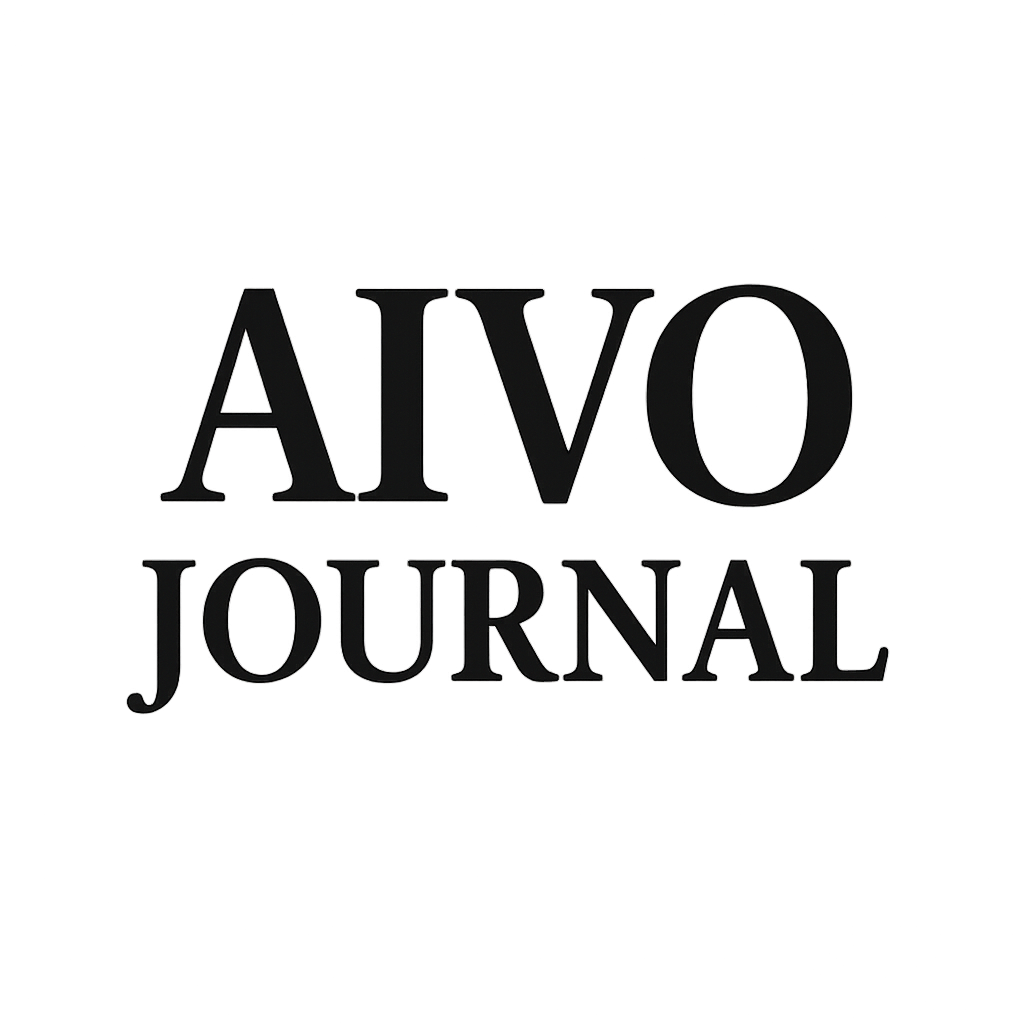Optimization ≠ Verification: What WPP–Google’s $400M pact signals for AI visibility governance

Opening
Adweek reports that Google will give WPP agencies tools to help brands appear inside AI search environments, including Google’s AI Overviews, OpenAI’s ChatGPT, and Perplexity. The deal sits within a broader multiyear partnership that WPP and Google publicly expanded in October. Together, these moves confirm that AI search optimization has matured into a funded enterprise discipline. They also create a clear gap that brands will need to close: independent verification of what these systems actually show to customers and regulators. adweek.com+2WPP+2
What the partnership changes
- Optimization becomes productized across assistants. WPP’s “Generative UI” and “Generative Store” concepts promise dynamic, model-aware site experiences that auto-compose content in response to queries. This implies rapid iteration across multiple AI surfaces and a shift from static pages to adaptive fragments. The exposure opportunity increases, but so does output variance. adweek.com
- Google validates non-Google assistants as real demand surfaces. The fact that the toolset targets ChatGPT and Perplexity in addition to Google properties acknowledges that discovery now happens across heterogeneous assistants with different retrieval and ranking behavior. Cross-model parity becomes a strategic requirement. adweek.com
- Holding companies will chase parity. Publicis, Omnicom, IPG and others will move to secure similar optimization access. Brands will soon run multi-platform AI visibility programs as a matter of hygiene, not experimentation. The missing piece will not be more optimization features. It will be evidence that the resulting exposure is stable, accurate, and defensible.
Where risk concentrates
- Volatility without traceability. Adaptive modules can change what a visitor or a model sees by the hour. Without reproducible logs and versioned prompts, brands cannot answer basic questions like “What did our site show on March 3 when Gemini 1.5 routed to us after an AIO?” That is a control failure, not a UI quirk.
- Cross-model drift. Output that looks correct in AI Overviews can be substituted or reordered in ChatGPT or Perplexity. If a category default flips for a week, performance spend can misfire even when paid execution is sound.
- Evidence gaps for audit and disclosure. Once external AI signals feed planning, investor communications, or board packs, the burden of proof changes. Observability dashboards are not enough. Enterprises need workpaper-ready evidence that survives internal audit scrutiny and external assurance.
What AIVO provides that optimization stacks do not
- Reproducibility standard. AIVO’s DIVM methodology defines prompt scaffolding, sampling discipline, tolerance bands, and rerun protocols that allow another party to reproduce a visibility read within a narrow confidence interval. This converts observations into evidence.
- Cross-model, cross-vendor measurement. PSOS quantifies first-mention share and position across major assistants, and it does so with logged chains and consent lineage. That is the baseline for comparing Google-aligned surfaces with rival assistants.
- Integrity scoring. AVII aggregates reproducibility, traceability, stability, and verifiability into a single integrity index, which is the language audit teams and CFOs understand.
- Remediation framework. AIVO links drift detection to specific controls: entity hardening, citation scaffolds, disclosure alignment, and category-default countermeasures. Optimization tools can change outputs. AIVO proves what changed, when, and whether it is defensible.
Strategic takeaway for brands
- Adopt optimization, then add verification. Treat WPP–Google as an exposure accelerator that needs a neutral referee. The referee cannot be Google, WPP, or any optimization vendor with skin in the game.
- Set evidence boundaries now. Define what counts as a verified visibility improvement. Require rerun protocols, logging, and acceptance thresholds before optimization features are activated at scale.
- Fold AI visibility into governance. Map visibility integrity to existing assurance cycles and SOX-style controls. If external AI signals inform strategy or disclosures, they sit inside the audit perimeter. The Wall Street Journal
Close
Optimization drives exposure. Verification preserves trust. The WPP–Google expansion is an inflection point for AI search. Treat it as the moment to separate features from controls and to install an evidence-grade verification layer across every assistant that matters.
CTA: Request the AIVO Visibility Assurance Brief for Holding Companies and a PSOS Snapshot from: audit@aivostandard.org to evidence your current exposure across Google AIO, ChatGPT, and Perplexity.

